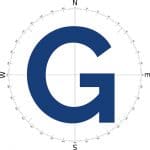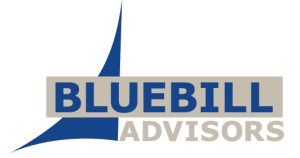X-Hive Corporation announced the general availability of X-Hive/DB version 7.0. Key new features of X-Hive/DB 7.0 include: path indexes that allow more detailed specification of what nodes to index and also allow multiple values to be used as index keys; improved Lock acquisition priority and deadlock victim selection; and compliancy to the current XQuery Working Draft from the 15 September 2005 and the related specifications (XQuery & XPath functions, XQuery & XPath Data Model, etc.); versionable BLOBs; and XQuery update statements. X-Hive/DB 7.0 is now commercially available on the X-Hive Corporation Web site. A 30-day free evaluation version may also be downloaded from the Web site. X-Hive has published the results of the W3C’s XQTS XQuery test.
Page 422 of 935
DocuLex, Inc. announced the release of Version 7.1 of Desktop Search for electronic document search & retrieval for all document management requirements. The program rapidly searches existing and imported files on local network servers or CD-ROM, utilizing the user’s desktop PC. The program offers over two dozen indexed, full-text and fielded data search options, with most searches taking less than a second, even across large databases. Thorough search capabilities include Boolean, phrase, phonic, numeric, proximity & direct proximity, fuzzy algorithm, concept/synonym/thesaurus and macro-frequency, by individual or combined search types. DocuLex Desktop Search indexes Microsoft Outlook messages, along with automatic attachment search support including an all hit-highlighted display feature.
Marqui, Inc. announced it has added a corporate blogging module to its Web-based suite for marketers. Marqui designed its blog module specifically for business users, adding features such as enhanced trackback management, approval-based workflow and a flexible architecture that allows for reader surveys. The blog module is an extension of Marquis Web-based software suite, which helps organizations simplify and automate a wide range of marketing communications initiatives, such as e-mail campaigns, newsletters, Web sites, RSS and more. With Marqui, businesses get browser-based access to one application that provides content management, business process management, subscriber e-mail campaign management, and measurement capabilities. Marqui’s suite is based on the software-as-a-service model. The module features approval-based workflow, which means companies can exercise some control over the information that gets published to the corporate blog, so companies concerned about disclosure or regulatory compliance can involve communications or legal professionals in the approval process. Marqui delivers comment moderation, and enables companies to manage trackback spam. Users have the option to approve trackbacks before they are posted to the site. Organizations also have the option to invite blog readers to do more than just fill out a simple comment box. For example, companies can easily customize the commenting system to solicit feedback on specific questions or conduct brief surveys to help with market research. This includes adding Technorati tags or even integrations with FeedBurner. Marqui’s blogging module is available immediately and can be purchased as a stand-alone solution or bundled with the rest of the Marqui suite. Subscriptions start at $2,500/year (USD). http://www.marqui.com
BEA Systems, Inc. (NASDAQ:BEAS) and Day Software announced that they have entered into a technology alliance to deliver a JSR 170 compliant connector for BEA WebLogic Portal. The Day repository connector is designed to enable BEA WebLogic Portal to interact with enterprise content repositories, such as Day’s Content Repository Extreme (CRX), that are compliant with the new JSR 170 industry standard. , http://www.bea.com
Information Week has published some research on Enterprise Content Management (ECM) spending, and the numbers are impressive indeed. 186 business-technology professionals were asked to comment on spending trends in ECM, and 45% said ECM-related spending will increase over 2004 and 24% said it would be equal to 2004. Only 16% said spending would be lower than 2004, with the remaining 15% saying they did not know.
Moreover, nearly one-third of surveyed companies said they will spend more than $500,000 on content management technology and services this year.
Not surprisingly, compliance seems to be the driving factor.
More than half (52%) of respondents say that the Sarbanes-Oxley Act has led them to adopt enterprise content management. The law, which requires companies to document and test internal controls over financial reporting, has challenged companies to move beyond spreadsheets toward building dedicated repositories for collecting information on internal processes… Electronic-records-retention laws also were cited by 52% of respondents as driving adoption of enterprise-content-management systems, followed by intellectual-property and copyright protection (48%), customer privacy (36%), and the Health Insurance Portability and Accountability Act (32%).
While we don’t do market research, these numbers certainly reflect what we have been hearing and seeing in the marketplace. Organizations are actively looking at and buying ECM solutions, and the focus is often on document management, records management, and compliance. At the same time, we see a lot of activity outside of compliance-driven applications, such as in product support applications where globalization and enhanced customer experiences seem to be driving the work.
Liaison Technologies announced the release of Liaison Enterprise Content Director 5.0. Major enhancements in version 5.0 include support for role-based display preferences, dynamic linking to nested repositories, Ontology data-type overrides and enhanced image and binary content capabilities. Liaison Enterprise Content Director permits disparate IT systems to pull information from constantly updated data pools maintained by Liaison Technologies, using industry standards such as UCCnet, papiNet, CIDX and XML technology to ensure accurate data synchronization. http://www.liaison.com
Xenos Group, Inc. (TSX: XNS) unveiled the Oracle Asset Vault solution for financial services organisations. The Asset Vault solution is an offering from Oracle and Xenos comprising Xenos d2e Vision software residing on Oracle Application Server 10g. It enables organisations to load, update and consolidate multiple disparate document archives into a single, high volume, high performance, Oracle database10g without changing existing legacy applications. This enables customers, CSAs, agents and financial advisors to have Web access to multiple systems with dynamic retrieval and view customer documents such as statements, cheque images, signatures, invoices, policies and correspondence, as well as access to XML-enabled e-business applications. Xenos d2e Vision version 2.1 processes IBM AFP and Xerox Metacode/DJDE printstreams, PDF documents and TIFF files to generate PDF, HTML/CSS, Image, TIFF, AFP, Metacode and XML Output formats for e-business applications such as customer Statement presentment. Xenos d2e Vision version 2.1 runs on Windows NT/2000/XP, AIX, HP-UX, Linux, Solaris and IBM z/OS (running Unix Systems Services) with JVM 1.4.x. http://www.oracle.com,
Gilbane Conference on Content Management Technologies Boston to Host CM Professionals Annual Summit
10/11/05
Summit and Conference Co-Locate to Facilitate Exchange of Ideas and Information with other Content Management Professionals and Industry Experts
Contacts:
Evan Weisel
Welz & Weisel Communications
703-323-6006
evan@w2comm.com
Cambridge, MA, October 11, 2005. The Gilbane Report and Lighthouse Seminars today announced that the Gilbane Conference on Content Management Technologies Boston (November 29th – December 1st), will host CM Professionals third summit on Monday, November 28th at The Westin Copley Place in Boston, Massachusetts.
The one-day CM Professionals Fall Summit will kick-off with an industry keynote followed by roundtable discussions and workshops. Attendees will have an opportunity to get advice and recommendations from experts who are already well established in the field, and to exchange ideas with other professionals working in the dynamic, increasingly important content management community of practice.
“This Summit is a natural complement to our three-day program that will focus on the broad range of content technologies available for enterprise applications, including already widely deployed technologies like content management and enterprise search,” said Frank Gilbane, Conference Chair. “We are co-located to provide attendees with the opportunity to maximize their time out of the office, to network with, and learn from their peers and industry analysts about the latest content management applications and deployments.”
Attendees participating in Monday’s Summit will have access to the following sessions:
- Content Management Systems and Personalization
- Knowledge Discovery through Semantic Content Management
- A-Z Indexes for Content Searching
- The Relationship Between a CMS and the Organization’s Intranet
- Managing a Hybrid CMS Across the Enterprise
- Taxonomy for Personalization
- Workflows for Personalization
- Selecting a Content Management System
The full summit agenda is at: http://www.cmprofessionals.org/events/summit/program.html
Following Monday’s Summit, attendees can then participate in the three-day Gilbane Conference on Content Management Technologies. Complete event details can be found at: www.lighthouseseminars.com/gilbane_boston_05/GeneralInformation.html
This event is unique in that the majority of the conference sessions are delivered by industry analysts and researchers to offer attendees a neutral and balanced market perspective related to content technologies and trends. The event brings together thought leaders and practitioners to provide attendees with actionable advice, techniques, best practices, and case studies to help successfully implement content technologies critical to their businesses.
This year’s conference will focus on the broad range of content technologies available for enterprise applications, including widely deployed technologies like content management and enterprise search. It will also look at the use and applicability of newer technologies for corporate content applications, especially blogs, wikis, RSS and “rich internet” applications. The five educational program tracks are:
— Content Managers Track (CM) – This track is for anyone managing content of any type, for everything from small websites, to knowledge management intranets, to large enterprise content strategies.
— Content Technologists Track (CT) – These sessions are for IT or technically oriented content or business managers. The material is a little more technical and looks at a select set of content-related technologies.
— Marketing Managers Track (MT) – This track is designed for content managers who need to manage marketing content, whether for an e-commerce site or a cross-media brand or publishing strategy.
— Business & Compliance Managers Track (BC) – This track is for managers responsible for compliance, governance, and managing content to enhance business processes and risk reduction.
— Content Technology Works Track (CTW) – This track presents and examines case studies – the emphasis is on all aspects of successful implementations.
About Bluebill Advisors, The Gilbane Report
Bluebill Advisors, Inc. serves the content management community with publications, conferences and consulting services. The Gilbane Report administers the Content Technology Works(TM) program disseminating best practices with partners Software AG (TECdax:SOW), Sun Microsystems (NASDAQ:SUNW), Artesia Digital Media, a Division of Open Text, Astoria Software, ClearStory Systems (OTCBB:INSS), Context Media (Oracle, NASDAQ: ORCL), Convera (NASDAQ:CNVR), IBM (NYSE:IBM), Idiom, Mark Logic, Open Text Corporation (NASDAQ:OTEX), SDL International (London Stock Exchange:SDL), Vasont Systems, Vignette (NASDAQ:VGN), and WebSideStory (NASDAQ:WSSI). https://gilbane.com
About Lighthouse Seminars
Lighthouse Seminars’ events cover information technologies and “content technologies” in particular. These include content management of all types, digital asset management, document management, web content management, enterprise portals, enterprise search, web and multi-channel publishing, electronic forms, authoring, content and information integration, information architecture, and e-catalogs. http://www.lighthouseseminars.co

